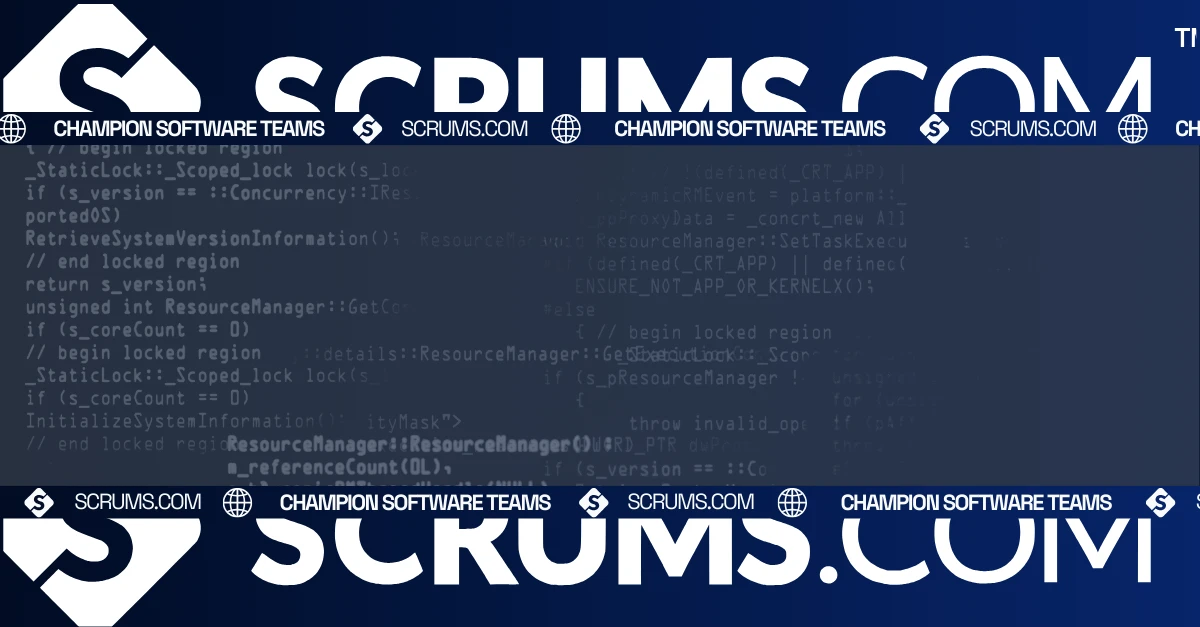SQL Server Management Studio (SSMS)
Introduction to SQL Server Management Studio (SSMS)
SQL Server Management Studio (SSMS) is a powerful integrated environment for managing, configuring, and administering Microsoft SQL Server databases. As a fundamental tool for database professionals, SSMS provides a graphical interface and script editors to manage SQL infrastructure, making it indispensable for business owners, CTOs, and developers focused on data-driven decision-making, data security, and efficient database management.
What is SQL Server Management Studio (SSMS)?
SQL Server Management Studio (SSMS) is a free, integrated environment developed by Microsoft for managing any SQL infrastructure, from SQL Server to Azure SQL Database. Released in 2005 with SQL Server 2005, SSMS has become a critical tool for database administrators (DBAs), developers, and business analysts to manage databases, run queries, create stored procedures, and analyze performance.
The primary problem SSMS solves is the complexity involved in managing and maintaining SQL Server databases. With its user-friendly interface, rich scripting environment, and powerful tools, SSMS simplifies tasks such as database creation, configuration, monitoring, and troubleshooting. It is most effective in environments where database management is crucial, such as large-scale enterprises, fintech applications, healthcare data systems, and e-commerce platforms.
Core Features and Functionalities
SQL Server Management Studio offers a comprehensive set of features designed to cater to various database management needs:
Object Explorer: Provides a tree view of database objects, allowing easy navigation and management of databases, tables, views, and stored procedures.
Query Editor: An advanced T-SQL editor that includes syntax highlighting, IntelliSense, code snippets, and error highlighting for efficient query writing.
SQL Server Profiler: A tool for monitoring and tuning the performance of SQL Server databases by capturing and analyzing server events.
Activity Monitor: Offers real-time insight into SQL Server performance, including resource usage, active processes, and costly queries.
Database Diagrams: Enables users to visually design and manage database schemas, making it easier to understand relationships between tables and other objects.
Backup and Restore: Simplifies database backup and restore operations with wizards and automated scheduling, ensuring data protection and disaster recovery.
Data Import and Export Wizard: Assists in importing and exporting data from various sources, such as Excel, CSV, and other databases.
Security Management: Provides tools for managing users, roles, permissions, and auditing, ensuring robust database security.
These features provide significant business value by enhancing database management efficiency, improving performance, and ensuring data security.
Benefits for Businesses and Development Teams
For Businesses:
- Improved Data Management: SSMS allows businesses to manage their SQL Server databases more efficiently, ensuring data integrity and availability.
- Enhanced Security and Compliance: SSMS provides tools for managing user access, roles, and permissions, ensuring data security and compliance with regulations such as GDPR and HIPAA.
- Cost Efficiency: As a free tool, SSMS reduces the costs associated with database management, providing all the essential functionalities without additional licensing fees.
- Optimized Performance: With built-in tools like SQL Server Profiler and Activity Monitor, businesses can optimize database performance, reducing downtime and improving application responsiveness.
- Data-Driven Decision Making: SSMS’s powerful querying and reporting capabilities enable businesses to extract valuable insights from their data, supporting strategic decision-making.
For Developers:
- Advanced Query Capabilities: The Query Editor offers syntax highlighting, IntelliSense, and debugging features, making it easier for developers to write, test, and optimize SQL queries.
- Streamlined Database Development: With features like Database Diagrams and T-SQL debugging, SSMS helps developers efficiently design, implement, and manage database schemas.
- Integration with DevOps Tools: SSMS integrates with source control tools like Git, enabling version control for SQL scripts and database objects within DevOps workflows.
- Flexibility and Compatibility: Supports all SQL Server versions and integrates with Azure SQL Database, offering flexibility for on-premises and cloud environments.
- Efficient Troubleshooting: Built-in tools like SQL Server Profiler and Extended Events help developers identify and resolve performance issues quickly.
Use Cases and Applications
SQL Server Management Studio is versatile and serves various use cases across different industries.
Database Administration: Ideal for DBAs managing large-scale SQL Server environments, providing tools for backup, recovery, monitoring, and security.
Data Analysis and Reporting: Enables business analysts and data scientists to run complex queries, create reports, and extract actionable insights.
DevOps and Continuous Integration: Integrates with CI/CD tools to automate database deployment and management in DevOps pipelines.
Industry-Specific Applications:
- Fintech: Manages secure and high-performance databases required for financial applications, ensuring compliance and data integrity.
- Healthcare: Ensures secure handling of sensitive patient data and compliance with regulatory standards like HIPAA.
- E-commerce: Supports high-volume transaction processing and real-time analytics for personalized customer experiences.
Integration Capabilities and Ecosystem
SQL Server Management Studio is designed to integrate seamlessly with various tools, platforms, and services.
- Popular Platforms: Supports integration with Microsoft Azure, enabling easy management of Azure SQL databases alongside on-premises SQL servers.
- Development Tools: Integrates with Visual Studio for a comprehensive development environment and source control systems like Git for version control.
- API Availability: SSMS can be extended and automated through PowerShell scripts and APIs, enabling custom workflows and automation.
- Extensions and Plugins: Supports various third-party extensions and plugins for enhanced functionalities like monitoring, security, and reporting.
Comparison with Alternatives
SQL Server Management Studio is often compared with other database management tools like MySQL Workbench, pgAdmin, and DBeaver. Here’s a brief comparison:
- Pros: Native support for Microsoft SQL Server, robust feature set, excellent integration with Microsoft tools, and extensive documentation.
- Cons: Primarily focused on Microsoft SQL Server, which may limit its use with other database systems.
- Cost Considerations: SSMS is free to use with Microsoft SQL Server, making it a cost-effective choice for businesses already using Microsoft products.
- When to Choose SSMS: Opt for SQL Server Management Studio if you are managing Microsoft SQL Server databases and need a comprehensive, integrated development environment for database management.
Getting Started with SQL Server Management Studio
Here’s a step-by-step guide for business decision-makers and developers to get started with SSMS:
- Download and Install SSMS: Download the latest version of SSMS from the Microsoft website and install it on your machine.
- Connect to SQL Server Instance: Use SSMS to connect to an existing SQL Server instance, whether on-premises or in the cloud.
- Explore Object Explorer and Query Editor: Familiarize yourself with the Object Explorer and Query Editor to manage databases and execute queries.
- Set Up Security and Permissions: Configure user roles, permissions, and security settings to ensure data protection and compliance.
- Monitor and Optimize Performance: Use tools like SQL Server Profiler and Database Engine Tuning Advisor to monitor and optimize database performance.
- Automate tasks with scripting and extensions: Utilize T-SQL scripts, PowerShell, and extensions to automate routine database tasks and enhance productivity.
Refer to SQL Server Management Studio Documentation for tutorials, webinars, and comprehensive guides.
Related Tools and Resources
- SQL Server Management Studio vs. Oracle SQL Developer: Compare the features, pricing, and benefits of SSMS and Oracle SQL Developer.
- Integrating SSMS with DevOps Tools: Learn how to integrate SSMS with CI/CD tools like Azure DevOps and Jenkins.
- Best Practices for SQL Server Management: Discover strategies and tools for optimizing SQL Server management and performance.
- SQL Server Management Studio Documentation: SQL Server Management Studio Documentation for comprehensive guides and tutorials.
Explore Related Software Development Tools
FAQs
We've got you covered, these are some common questions we receive. Not seeing the answer to something?...
Yes, SSMS is a free tool provided by Microsoft for managing SQL Server and Azure SQL Database environments.
SSMS simplifies database management, enhances security, and integrates with CI/CD tools, making it ideal for modern software development companies.
SSMS requires a Windows operating system (Windows 10 or later) and .NET Framework 4.7.2 or higher.
Yes, SSMS supports various third-party extensions and plugins to enhance functionality, such as monitoring, security, and reporting.
SSMS provides robust security features like secure connections, role-based access control, and encryption support to ensure database security.
Yes, SSMS integrates with source control tools like Git and CI/CD pipelines to support DevOps practices for database development and management.
Explore Software Development Blogs
The most recent trends and insights to expand your software development knowledge.




